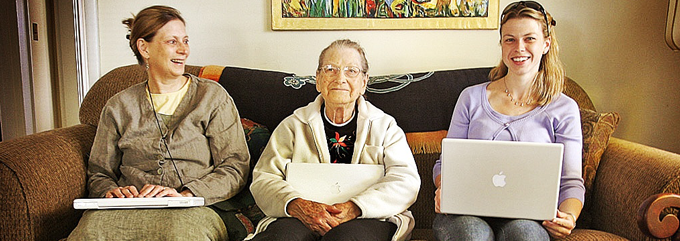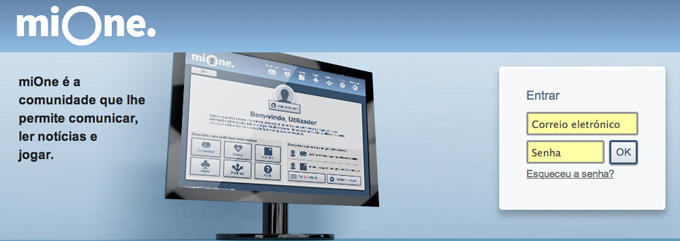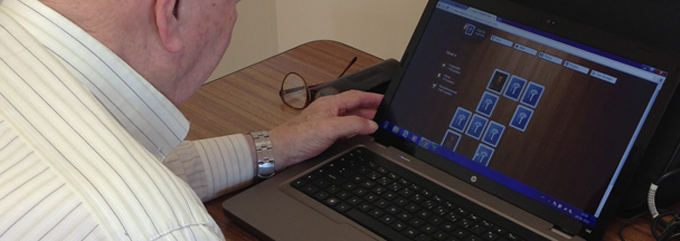About the research project
In this page:
The SEDUCE project (Use of information and communication in technologically mediated Web ecologies by senior citizen) is funded by the Foundation for Science and Technology (FCT) and the COMPETE program under the reference PTDC/CCI/COM/111711/2009.
SEDUCE is undertaken as part of the research centre CETAC.media (University of Aveiro).
This project has the purpose of: (a) assessing the impact of Information and Communication technologies’ use on older adults’ emotional variables (mood, self-concept and quality of life); and (b) building an online social community, involving older adults during the design process. This project also aims to contribute to a better quality of life for older adults, considering the Portuguese context and the national reality.
The evaluation of the emotional variables - mood (Lawton, 1976 adaptado por Paúl, 1991), self-concept (Vaz-Serra, 1986) and quality of life (WHOQOL Group, 1998 adaptado por Vaz-Serra, 2006) was made before and after the use of ICT. Regarding the online social community, this follows a community-centred design approach (Preece, 2000), which involves the active participation of older adults in all phases of the multimedia applications’ development cycle.
Poster | FlyerThe problem statement
 Photography © Lyza Danger, 2006.
Photography © Lyza Danger, 2006.
According to the United Nations, the world population is ageing. It is expected that by 2050, the number of population aged 60 or over will increase sharply, since the trends are the decrease of the number of youngsters and, consequently, the progressive increase in the older adults (UN, 2001).
The reality of European Union (EU) is not different from that mentioned above. By 2020, it is estimated that 25% of the European population is aged 65 years old or over. Besides these demographics aspects, there are some biopsychosocial difficulties that affects this target (changes in the function of important organs, in the nervous system, in the level of neurotransmitters in brain atrophy, decreased oxygenation, depression, social isolation, etc).
Considering the fact that technology is omnipresent in today’s society and that the use of ICT can have social and cognitive benefits for older adult, it is urges to reach a broad intergenerational audience by making technological devices and multimedia applications accessible and easy-to-use. The project SEDUCE embarked on this challenge.
The online social community

The online social community is developed with the active participation of older adults from four Private Institutions of Social Solidarity (IPSS) of Aveiro: the social centre of Santa Joana Princesa (CSSJP), CESDA Foundation (CESDA), S. Bernardo (BSCP) and Patronato de Nossa Senhora de Fátima de Vilar (PNSFV).
This community includes the following areas: (a) the communication area that integrates an email and an instant messaging service; (b) an area devoted to healthcare; (c) information; (d) entertainment; (e) shared experiences (blog). In addition, this community offers three areas of users’ support, taking usability and accessibility issues into account (e.g. (f) helpdesk, (g) a search area and a (h) notifications system).
The online community differs from social networks because it is organized around users’ interests, it strengthen weak ties’ relationships among new members and it has a purpose in a cooperative and collaborative environment (Ellison, 2007).
Activities

Conducting activities with older adults from several day-care centres of Aveiro
These activities aim to introduce Information and Communication Technologies (ICT) for older adults. Researchers act as insiders and twice a week, they conduct several activities related to: The introduction to Information and communication technologies (ICT); The Internet; (A) synchronous communication services; search and visualization of information and video games. These activities encompassed: (a) contacting with communication services, such as: Gmail and Google Talk; (b) video calling with Skype; (c) capturing and sending photographs; (d) using editing tools such as Word processing; (e) reading and sending emails; (f) reading news; (g) playing computer games and games with kinect.
Training older adults in Introduction to Multimedia at the University of Aveiro (Encounters with Science)
The project team has trained older adults to use information and communication technologies. These participants enrolled the course at the University of Aveiro, under the program “Encounters with science” promoted by the Department of Education . The main goals of this course was: providing older adults with basic computer skills (image and text editing, the Internet and the use of communication and information services). Thus, the course integrated the following modules: 1. The computer Structure (the computer , the concept of multimedia information organization and retrieval, operating systems, ...); 2 .Text and Image (Word processing , Word and Powerpoint editing , digital image processing and editing tools) ; 3.The Internet (Web browser and social networks) and 4.Communication services (communication tools , the use of email and instant messaging).
Usability testing with end users
The design process of each area of the online social community was iterative, encompassing different moments of usability testing with end users. Furthermore, effectiveness (accuracy and completeness), efficiency (task completion time and number of mistake) and participant satisfaction (rating/likert scales and the comparison between the real and the perceived time) were measured.
Conducting a survey to cover a broad array of play patterns and preferences of gamers aged 50 years old and over
The online social community area related to video games involved the design and the administration of a questionnaire to 245 gamers aged 50 and over. It had the purpose of understanding their motivations for playing video games, their preferences and main difficulties when interacting with these systems.See the infographics
Design and implementation of the online social community
The prototype of an online social community is designed by and for the users through participatory design techniques. It also results from an interative process of successive tests and interface redesign. See the online social community
Exergame (video games used to do exercise)
The project SEDUCE also acts on the exergame field (the use of video games with a gestural interaction paradigm). A game prototype named “Malha” (with the use of Kinect) has been implemented and evaluated with older adults .
The evaluation of older adults’ self-concept, mood and quality of life before and after the use of ICT
Throughout the project implementation, there have been three evaluation moments of the self - concept, mood and quality of life of two groups (control group and an experimental group). The experimental group used Information and Communication Technologies (ICT) twice a week over three years with the assistance of researchers whereas the control group had no contact with ICT. Then, the collected value were compared between both groups.
References
- Ellison, N. B. (2007). Social network sites: Definition, history, and scholarship. Journal of Computer‐Mediated Communication, 13(1), 210-230.
- UN (2001). World Population Ageing: 1950-2050. Department of Economic and Social Affairs : Population Division, Volume II: Magnitude and Speed of Population Ageing, 11-13. Retrieved from http://www.un.org/esa/population/publications/worldageing19502050/
- Paúl, C. (1991). Percursos pela velhice: uma perspectiva ecológica em psicogerontologia. (Doutoramento), Universidade do Porto, Porto.
- Preece, J. (2001). Sociability and usability in online communities: Determining and measuring success. Behaviour & Information Technology, 20(5).
- Vaz-Serra, A. (1986). O "Inventário Clínico de Auto-Conceito". Psiquiatria Clínica, 7, 67-84.
- Vaz-Serra, A. (2006). Que significa Envelhecer? In: FIRMINO et al. (Eds). Psicogeriatria. Coimbra: Psiquiatria Clínica, p. 21-33.
In progress
